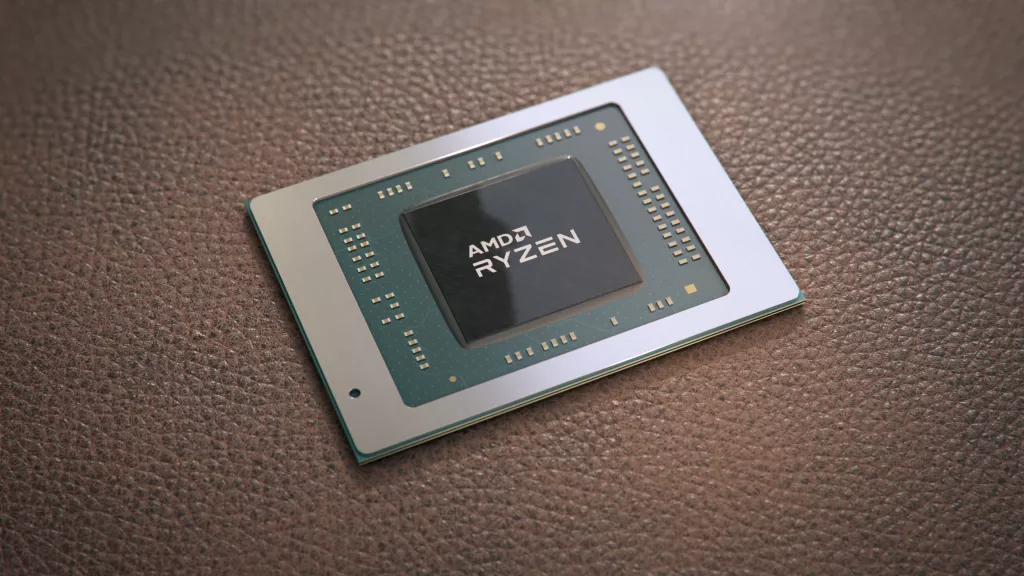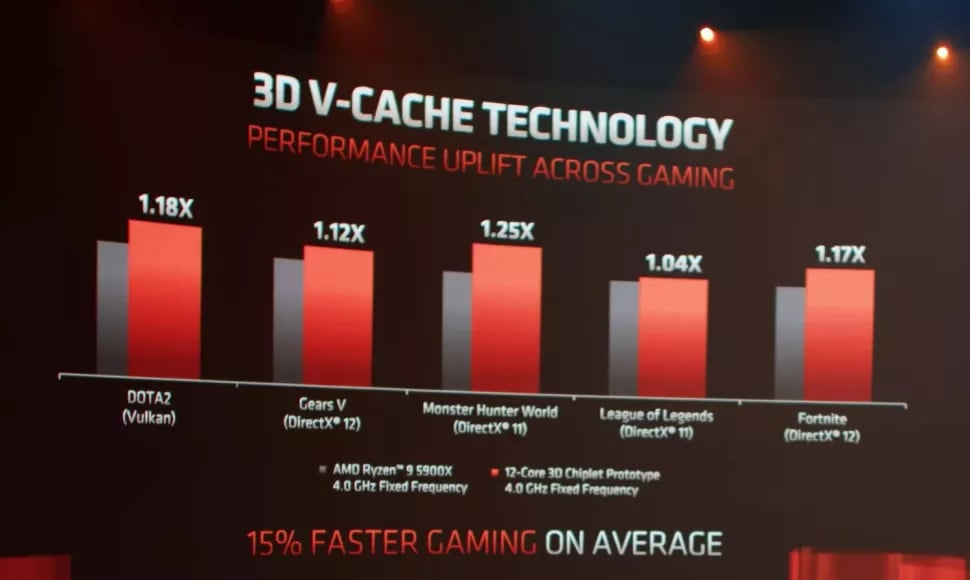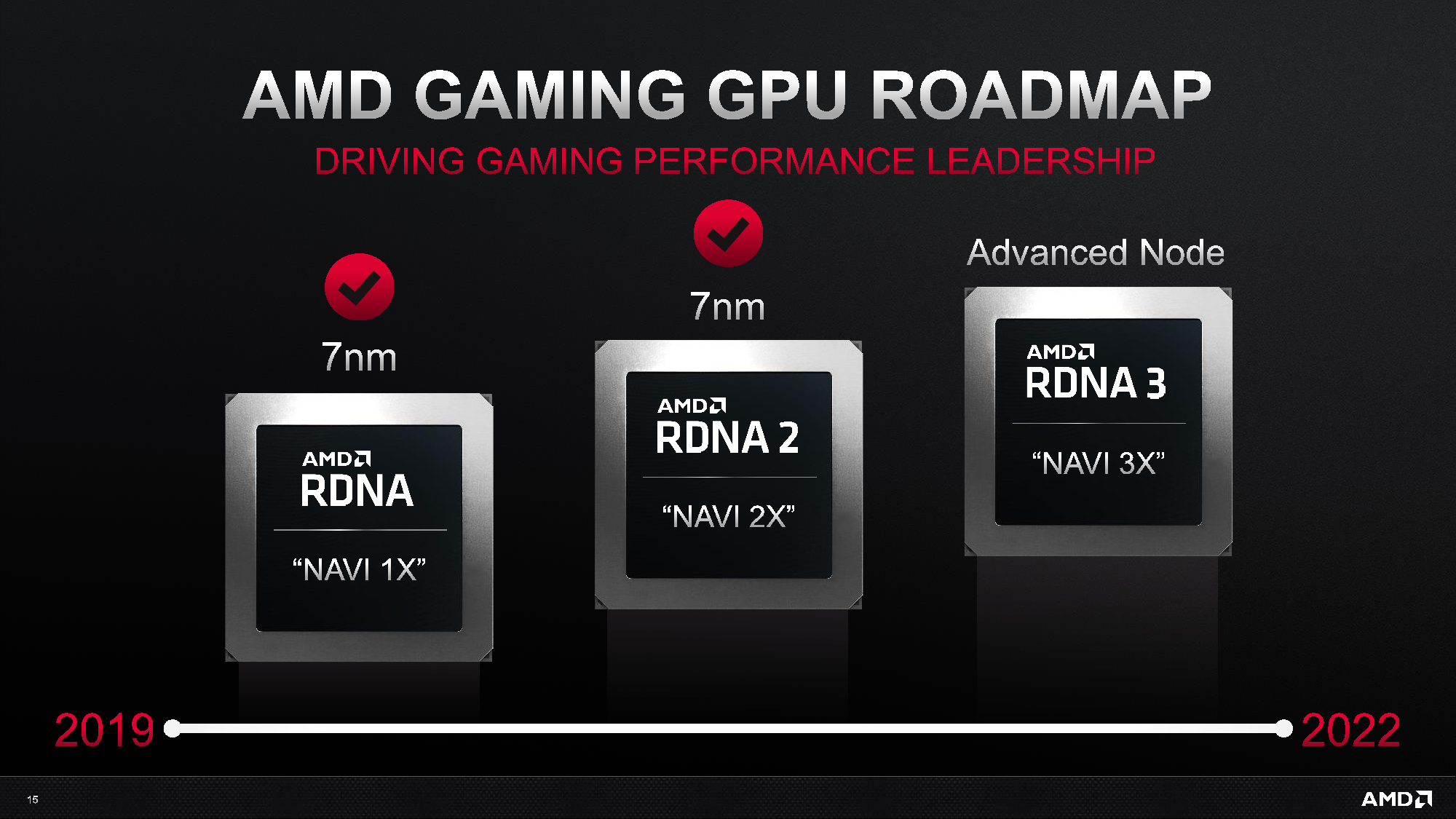AMD CES 2022 Event to Highlight Ryzen 3D V-Cache, Radeon Updates
AMD's answer to Alder Lake, plus new entry-level GPUs?
CES 2022 is just a few weeks away, and AMD will be on-hand to discuss the latest products in the pipeline. So naturally, CEO Dr. Lisa Su will headline AMD’s “2022 Product Premiere,” which will kick off on January 4th, 2022, at 10 am EST. AMD didn’t go into great detail when announcing the event, other than to say that Su will “highlight innovations and solutions featuring upcoming AMD Ryzen processors and AMD Radeon graphics.”
To the first point, AMD needs a powerful counterpunch to Intel’s 12th generation Alder Lake family of processors. The Core i9-12900K easily wrested the crown from AMD’s Ryzen 5000 family in gaming benchmarks, and the Core i7-12700K is no slouch either at an even lower price point. Rumors suggest that AMD will release a Zen 3 refresh featuring its new 3D V-Cache technology as an intermediary step between current Zen 3 and next-generation Zen 4 families.

AMD confirmed that Zen 3-based Ryzen processors with 3D V-Cache would enter production later this year, which means that TSMC is likely cranking them out by now. While current Ryzen 5000 processors top out at 64MB of L3 cache, 3D V-Cache enables an additional 64MB of 7nm SRAM cache atop the core complex die (CCD). With this arrangement, AMD tripled the maximum amount of L3 cache from 64MB to 192MB.
According to AMD’s calculations, a Ryzen 9 5900X with 3D V-Cache can deliver up to a 15 percent uplift in gaming performance (on average) at 1080p resolution. That could give AMD the ammunition it needs to battle the Core i9-12900K and Core i7-12700K. Still, we’ll need to assess real-world performance from our suite of productivity and gaming benchmarks (and not just AMD-selected apps), alongside expected price bumps over existing Ryzen 5000 processors.

Right now, the Ryzen 9 5950X and Ryzen 9 5900X carry MSRPs of $799 and $549, respectively, compared to $589 and $409 for the Core i9-12900K and Core i7-12700K. 3D V-Cache will likely only widen the price delta between AMD and Intel’s enthusiast-class processors.
Regarding graphics cards, we expect to hear a lot more about AMD’s entry-level Radeon RX 6400 and Radeon RX 6500 XT RDNA 2 graphics cards. According to a recent leak from the Eurasian Economic Commission (ECC), both graphics cards will come with 4GB of GDDR6 memory. This should be sufficient for playing modern games at 1080p with moderate levels of eye candy enabled. These cards will likely go head-to-head with NVIDIA’s GeForce RTX 3050, which is also rumored to make its debut at CES 2022.

Other possibilities for a CES 2022 launch from AMD include Ryzen 6000 “Rembrandt” processors, which are rumored to pair Zen 3 CPUs with RDNA 2 GPUs. These processors will likely find their way into gaming laptops and eventually OEM desktop PCs from the usual suspects like Lenovo and Hewlett-Packard. It’s uncertain if AMD will shed much (if any) light on its upcoming Zen 4 processor and RDNA 3 GPU families at the event. Both are scheduled to employ TSMC’s 5nm process node and should prove to be formidable competition to Intel and NVIDIA, respectively.
Get Tom's Hardware's best news and in-depth reviews, straight to your inbox.

Brandon Hill is a senior editor at Tom's Hardware. He has written about PC and Mac tech since the late 1990s with bylines at AnandTech, DailyTech, and Hot Hardware. When he is not consuming copious amounts of tech news, he can be found enjoying the NC mountains or the beach with his wife and two sons.
-
wifiburger That zen3 refresh better have good prices.Reply
Am I the only one that find it ridiculous we're up to 192mb of cache on AMD to compete with 20mb of cache on 12th gen Intel ? -
hotaru.hino Reply
Adding more cache to improve speed of a current gen architecture is much cheaper than creating a new architecture.wifiburger said:That zen3 refresh better have good prices.
Am I the only one that find it ridiculous we're up to 192mb of cache on AMD to compete with 20mb of cache on 12th gen Intel ? -
spongiemaster Reply
If adding gigantic amounts of cache to a CPU was a cost effective way of adding performance, it would have been done years ago in place of better architectures.hotaru.hino said:Adding more cache to improve speed of a current gen architecture is much cheaper than creating a new architecture. -
hotaru.hino Reply
Where did I say that?spongiemaster said:If adding gigantic amounts of cache to a CPU was a cost effective way of adding performance, it would have been done years ago in place of better architectures.
Well in any case, we also didn't have the technology to do such either. -
hotaru251 Replya Ryzen 9 5900X with 3D V-Cache can deliver up to a 15 percent uplift in gaming performance (on average) at 1080p resolution. That could give AMD the ammunition it needs to battle the Core i9-12900K and Core i7-12700K.
"could give"?
its a last gen cpu vs their flagship new gen.
it'll liekly match or beat it. That alone is a feat.
Zen 4 will likely wreck 12th gen (which is 12th gens real rival) given how each generation of zen improves.
better have the cache and not need it than have the need for it but not have it.wifiburger said:Am I the only one that find it ridiculous we're up to 192mb of cache on AMD to compete with 20mb of cache on 12th gen Intel ?
and it alone can give up to 15% gaming performance proves its useful. -
TerryLaze Reply
It's going to have the same problem as 12th gen, there are no GPUs that will show the difference...Zen3d will catch up on games that they are behind but it's going to be really hard to find any game where it will be any faster, because of the GPUs.hotaru251 said:better have the cache and not need it than have the need for it but not have it.
and it alone can give up to 15% gaming performance proves its useful.
And it's still going to be more expensive than intel, even if AMD keeps the prices at the same level as the versions without the cache it's still going to be too expensive.
Also it's 15% average of a grand total of 5 games, that's all AMD has shown, ...with the worst case only giving 4% more performance, what if the worst case is going to be the case most of the times?
Also it's 15% at locked 4Ghz which means that it could be that the final difference compared to normal 5xxx is going to be smaller, depending on how much power the cache takes away from the cores and how it will influence the heat dissipation.
Also you have to keep in mind that if this cache actually does work and gives good improvements all around then intel can do the same thing very easily and very fast, intel already did something similar with broadwell and now they do have foveros so the only thing stopping them is that they don't yet need to do it. -
digitalgriffin Reply3D V-Cache will likely only widen the price delta between AMD and Intel’s enthusiast-class processors.
Intel is eating AMD's lunch by undercutting AMD on Performance : Price ratio with Alder Lake. It would take some serious guts for AMD to raise prices even more. Only reason I didn't upgrade is because AMD got greedy. -
digitalgriffin ReplyTerryLaze said:Also you have to keep in mind that if this cache actually does work and gives good improvements all around then intel can do the same thing very easily and very fast, intel already did something similar with broadwell and now they do have foveros so the only thing stopping them is that they don't yet need to do it.
Always a ray of sunshine for intel aren't you?
Intel is already stacking cores on top of cores. Adding v-cache might be a serious issue heat wise. So maybe not so easy for intel.
Also it's 15% average of a grand total of 5 games, that's all AMD has shown, ...with the worst case only giving 4% more performance, what if the worst case is going to be the case most of the times?
This statement is known as bias planting. Your assuming worse case and stating it. We don't know a thing until it's in the hands of reviewers. And Intel has been mighty guilty in the past of saying "Oh we got a 20% boost" and then it's only 2%-3%. So you have to wait for reviewers to have their say.
Also it's 15% at locked 4Ghz which means that it could be that the final difference compared to normal 5xxx is going to be smaller, depending on how much power the cache takes away from the cores and how it will influence the heat dissipation.
It's likely an engineering sample. So not apples to apples.
That said, I do believe AMD will come close to matching Intels performance. (Purely hypothetical guess) HOWEVER they won't be able to offer the same value. -
salgado18 Reply
But the benchmarks already show the difference, so there are GPUs that can benefit from it. Also, some games can't reach 144 fps (to match a 144Hz monitor) because of the CPU.TerryLaze said:It's going to have the same problem as 12th gen, there are no GPUs that will show the difference...Zen3d will catch up on games that they are behind but it's going to be really hard to find any game where it will be any faster, because of the GPUs.
That's tricky, because Alder Lake is probably already more expensive than Zen 3, but Intel can just shrink their profit margins to hold the overall market share. AMD can't do that easily, they need the profits to keep going.TerryLaze said:And it's still going to be more expensive than intel, even if AMD keeps the prices at the same level as the versions without the cache it's still going to be too expensive.
Also, at the very least they will lower current gen prices to match Intel, like they did in the past (the FX-8120 launched a bit pricier than the i7-2600k, but quickly decreased to price parity and even a bit lower). Zen 3D will probably cost a bit more, but not much, otherwise they lose sales. Intel hit AMD very hard with these prices, and Ryzen prices will come down, but the question is how much can they do it and still keep making money. -
hotaru.hino Reply
That's if the system and CPU architecture actually benefits from having more cache in the first place. If you have a decent enough memory subsystem, throwing on more cache brings diminishing returns. e.g., Athlon 64s got away with less cache than the Pentium 4 because of having an on-die memory controller.TerryLaze said:Also you have to keep in mind that if this cache actually does work and gives good improvements all around then intel can do the same thing very easily and very fast, intel already did something similar with broadwell and now they do have foveros so the only thing stopping them is that they don't yet need to do it.
Arguably having more cache on Zen 3 bringing performance improvements may be indicative that DDR4 wasn't going to be up to snuff to feed the higher end SKUs.